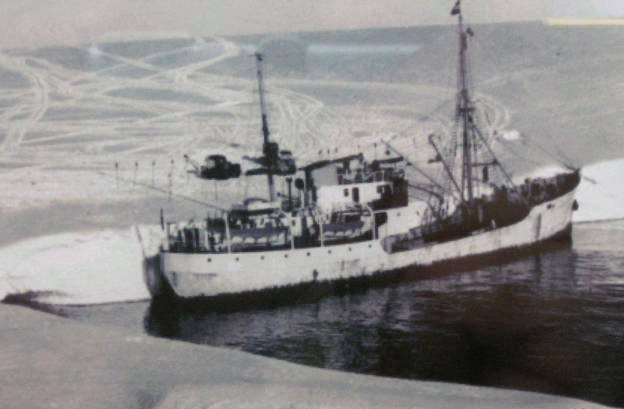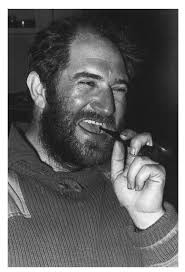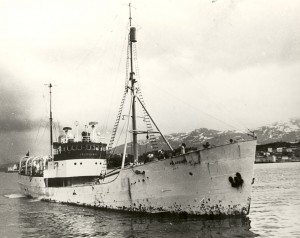
- This event has passed.
This day in history: the Polarbjørn arrives at Polarsirkel Bukta, Antarctica with the first SANAE team in 1960
January 8, 2016 @ 8:00 am - 5:00 pm

On 3 December 1959 the 486-ton Norwegian sealer Polarbjørn sailed from Cape Town for Antarctica. Chartered by the South African Government she carried the 10-person first South African National Antarctic Expedition overwintering team (SANAE 1) under the leadership of veteran Johannes Jacobus ‘Hannes’ la Grange (13 October 1927 – 21 April 1999). Hannes was the first South African to reach the South Pole – with the 1955/58 Commonwealth Trans Antarctic Expedition – and in the first half of the 1950s had undertaken four six-month tours of duty as a meteorologist at Marion Island with the M6, M7, M8 and M11 Teams. Also on board was Allan Crawford, M1 Team Leader in the first half of 1948, as a naval meteorologist.


Under the captaincy of Henrik Marø, a “sealer used to ice navigation”, the ship visited Bouvet Island (without making a landing) on its way south before being helped through the pack ice by the Argentinian icebreaker General San Martin. The Polarbjørn arrived at Polarsirkel Bukta, Fimbul Ice Shelf, Dronning Maud Land on the Antarctic Continent on 8 January 1960.
The journey south had been marred by two fatalities from among the ship’s complement. The Chief Steward Harold Hovde, who had apparently “been celebrating”, fell overboard while emptying a rubbish bin soon after sailing and despite an air and sea search lasting until the next day he could not be found. Then after leaving Bouvet the Second Mate Reidulv Kvien was killed on 10 or (11) December by a dynamite explosion in his cabin “probably while preparing charges to blast the pack-ice”. He was buried at sea among ice floes the next morning (of after two days). According to ALSA’s as-yet incomplete records these were the third and fourth losses of life by participants within the South African National Antarctic Programme (SANAP) in its broad sense, following drownings at Marion Island in 1948 and 1956.
On arriving at the Continent the ship was met by Sigurd Gunnarson Helle and his Sixth Norwegian Antarctic Team. SANAE 1 was to take over Norway Station, as well as its huskies – for which seals had been shot for food in the pack-ice on the southward journey The Polarbjørn left after off-loading was completed on 15 January with the 14-man Norwegian team aboard.

15 January 1960 may be regarded as the date from which South Africa established its presence in Antarctica, from when there has been an unbroken occupation to the present day, with the changeover between the S54 and S55 teams currently underway.
Selected References:
Crawford, A. 1982. Tristan da Cunha and the Roaring Forties. Edinburgh: Charles Skilton & Cape Town: David Philip. 256 pp.
La Grange, J.J. 1991. The beginning: 2 the first South African national Antarctic Expedition, 1959-60. South African Journal of Antarctic Research 21: 98-106.
van der Merwe, A. le R. 1968. Die Wit Horison. AntarktieseDagboekverhaal Desember 1959 -Januarie 1961. Cape Town: Human & Rousseau. 160 pp.
John Cooper, Principal Investigator, Antarctic Legacy of South Africa, Department of Botany and Zoology, Stellenbosch University
